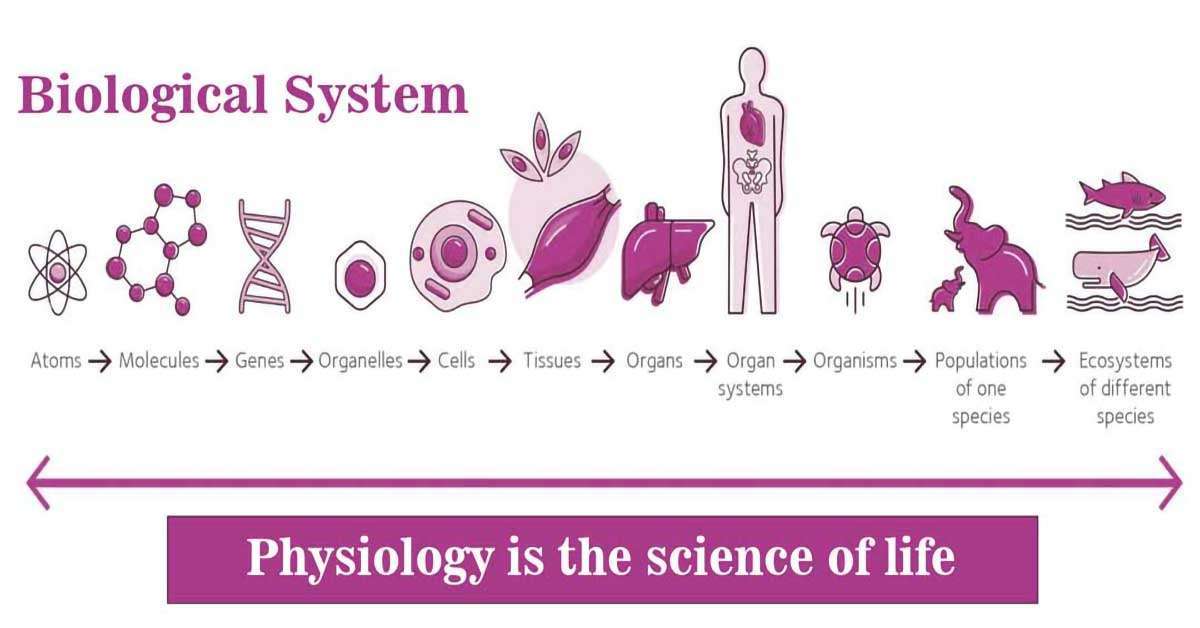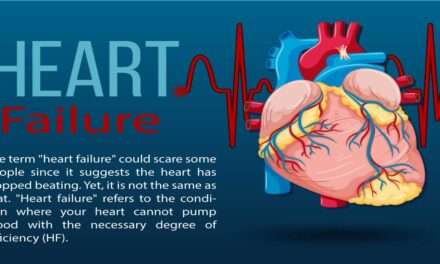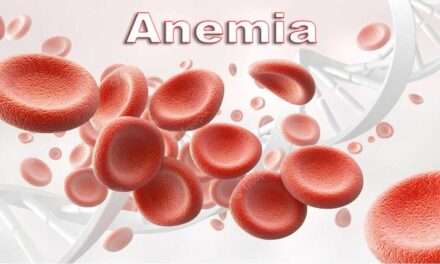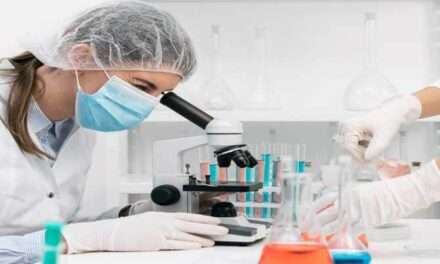Really it is awesome to know what is Physiology? The study of living things is known as physiology, it studies how living creatures’ cells, molecules, and organs work. Physiology and medicine have been interwoven for ages. Even though it is not primarily concerned with structure, functions are inextricably intertwined since live structures perform the functions (as with anatomy, histology, and structural biology).
Some people feel that physiology specifies how an individual should function (e.g., exercise physiology). Medical practitioners typically use the term “physiology” and pathophysiology to study how certain organ systems, such as the circulatory, pulmonary, or gastrointestinal systems, function. Others define physiology as the study of the fundamental cellular mechanisms that underpin the healthy operation of all tissues and organs. This last area of study is now known as “cellular and molecular physiology,” rather than “general physiology.” Even though several of its subfields focus on the differences and overlaps across species, the study of physiology can be categorized into different levels of reductionism.
Comparative physiology concerns all levels of the organization, from molecular to organismic. How the human body functions, studied in this discipline. It depends on the action of various organ systems, cells, subcellular organelles, and innumerable chemicals. As a result, a systems approach to human physiology is adopted, with molecular, cellular, and organ levels covered.
It is the parent discipline of biochemistry, biophysics, and neurology, as well as the scientific organizations and journals that support them. It is not surprising that the borders between the many domains of physio need to be better defined, on the other hand, it has distinct properties. For example, it has progressed from a qualitative to a quantitative subject of study over the years. Many well-known physiologists have backgrounds in other fields, such as chemistry, physics, mathematics, or engineering.
History of Physiology
Physio’s roots can be traced back to ancient Egypt and India. Its roots as a medical specialty can be traced back to Hippocrates, the famous “father of medicine” who flourished around 420 B.C.
The term “four humours” was coined by Hippocrates to describe the four unique physiological fluids that form the human body: blood, phlegm, yellow bile, and black bile. According to this idea, any deviation from these proportions will result in disease. Galen, also known as Claudius Galenus (about 130-200 AD), refined Hippocrates’ concept and was the first to collect data on the body’s systems through experiments. He is widely credited with inventing experimental physiology.
Jean Fernel, a French physician, invented the term “physiology,” which is taken from Ancient Greek and means “knowledge of nature, roots” (1497–1558). Fernel also described the spinal canal for the first time (the space in the spine where the spinal cord passes through). The Fernelius crater on the moon is named after him due to his efforts.
William Harvey’s publication of An Anatomical Dissertation upon the Movement of the Heart and Blood in Animals in 1628 represented yet another step forward in physio. Harvey was the first to define the heart’s role in systemic circulation and blood flow through the brain and body.
Surprisingly, the four humors remained an important foundation for medical practice until well into the 1800s (bloodletting, for instance). The cell theory, introduced by Matthias Schleiden and Theodor Schwann in 1838, caused a paradigm shift by proposing that an organism is made up of individual microscopic cells. The field of physio flourished and advanced rapidly after that. Joseph Lister, the first to focus on the coagulation and inflammation associated with wounds in 1858, finally discovered and used life-saving antiseptics.
Ivan Pavlov (1891) conditioned physiological reactions in dogs. August Krogh, born in 1910, received the Nobel Prize in Physiology or Medicine for understanding how capillary blood flow is regulated.
In 1952, Andrew Huxley and Alan Hodgkin discovered the ionic mechanism underpinning nerve impulse transmission. Andrew and Hugh Huxley’s 1954 discovery of sliding filaments in skeletal muscle was a key development in muscle research.
Branches of Physiology
The word “physiology” appears in the names of numerous fields. Here are a few examples:
Cell physiology: is the study of cellular processes, emphasizing membrane transport and neural communication; it is a branch of physio.
Systems physiology deals with complex biological systems’ mathematical and computational modeling. It seeks to describe how several components of a system interact to produce a coherent response. They frequently research cellular signaling and metabolic networks.
Evolutionary physiology: the study of how systems or components of systems adapt and change over time. Among the various research areas that have been investigated are the effects of behavior on evolution, sexual selection, and physiological changes in response to geographic diversity.
Defense Physiology: Body changes in response to danger, such as those that prepare the body for fight or flight.
Exercise physiology: as the name implies, is the scientific study of how physical activity affects the body. This field includes research into neuroendocrine function, skeletal muscle physio, neuro-energetics, and nervous system function.
Plant physiology: is a discipline of botany that investigates how plants function. Plant physiology, anatomy, ecology, phytochemistry, cell biology, genetics, biophysics, and molecular biology are all intertwined fields. Plant physiology comprises fundamental activities such as photosynthesis, respiration, nutrition, tropism, nastic movements, photoperiodism, photomorphogenesis, circadian rhythms, seed germination, dormancy, and stomata function and transpiration. Plant physiology includes processes such as root water uptake, leaf food generation, and shoot development in the direction of available light.
Biological systems- Life’s structures and processes
Human physio is primarily concerned with the following systems:
The cardiovascular system: includes the heart, circulatory system, blood properties, and how circulation works in health and disease.
The digestive and excretory system: monitors the transit of solids from the mouth to the anus and probes organs such as the spleen, liver, and pancreas as they convert food into energy and eliminate it from the body.
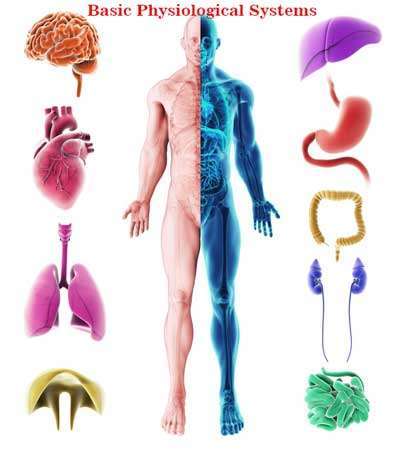
Endocrine system: The study of endocrine hormones, which send messages throughout the body and allow for a coordinated response. While the primary endocrine glands (pituitary, thyroid, adrenals, pancreas, parathyroids, and gonads) receive much attention, it is important to note that practically every organ secretes some endocrine hormone.
Immune System: The body’s natural defensive mechanism is the immune system, comprised of WBCs, the thymus, and the lymph systems. The host relies on a network of sensors and chemicals to repel invaders. Other chemicals, such as antibodies and cytokines, play an important function.
The integumentary system: consists of the skin, hair, nails, sweat glands, and sebaceous glands (secreting an oily or waxy substance).
The musculoskeletal system: includes the skeletal framework and the muscles, tendons, ligaments, and cartilage that link them. The bone marrow produces red blood cells, and bones contain calcium and phosphate.
The nervous system: includes the brain, and spinal cord, along with all of the body’s nerves. Perception, memory, emotion, motor control, and cognitive functions are all investigated in nervous system research.
The renal/urinary system: which includes the kidneys, ureters, bladder, and urethra, is responsible for filtering blood, producing urine, and excreting waste.
Reproductive System: Gonads and other genitalia are used in reproduction. The mechanism by which a fetus is produced and cared for during its first nine months is likewise a focus of this system’s research.
The respiratory system: comprises the nose, nasopharynx, trachea, and lungs. This configuration allows for oxygen absorption while also allowing for the release of carbon dioxide and moisture-laden water.
Physiological societies
Transnational physiological societies include:
- American Physiological Society
- International Union of Physiological Sciences
- The Physiological Society
- Brazilian Society of Physiology

